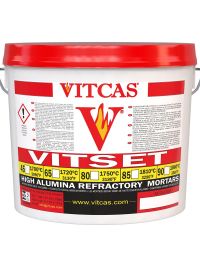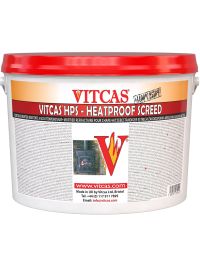Steam Engine history
The first steam engines were stationary and operated at low pressure. James Watt improved Newcomen's design by incorporating a separate condenser and continued to develop more powerful and efficient designs such as portable steam engines. As boiler construction improved, especially with the advent of the mobile boiler, he experimented with steam at higher steam pressure which could activate a piston directly and so paved the way for more compact engines that could provide locomotive power. Watt himself obtained a patent for a steam locomotive in 1794.
It was understood before the use of steam power that horses could pull heavier loads along fixed wooden rails than over uneven tracks. Such rails were in place in some locations, especially around mines, and horses were soon replaced by the new steam engines. Initially developed to facilitate the movement of raw materials and manufactured goods, the railways became unexpectedly popular with the public for passenger transport as well. The UK saw rapid expansion of the railway locomotive engines during the first half of the nineteenth century; in the 1830s, there were less than 100 miles of track, by 1860, there were over 10,000.
Fast forward to today, there have been various steam road vehicles produced such as steam rollers, traction engines and even steam boats. However, these other steam road vehicles have not been as popular as the locomotive steam engine.
How does a locomotive boiler operate?
The basic design of locomotive boilers remained constant throughout the age of the steam engine, while modifications in construction and additional features increased efficiency and improved safety. Locomotive boilers are of the fire tube boiler design.
Hot flue gases
This means that the fire creates hot exhaust gases which pass through a series of horizontal boiler fire tubes (hence the term horizontal drum axis) and transfer heat to the surrounding water within the boiler shell. Exhaust steam forms within the locomotive boiler and rises to the top, where the regulator valve regulates its flow into the cylinders.
Exhaust steam
After working the pistons, remaining exhaust steam passes and escapes into the smoke box and then through the blast pipe. Then the blast pipe pushes the steam out. This creates a partial vacuum which draws air through the fire box to aid combustion.
Originally the locomotive steam boiler was powered by a solid fuel, mainly coal, which was shovelled into the firebox (or smoke box) manually. Later, automatic stoking systems were introduced. Water supply to the locomotive boiler is maintained by injectors which operate by injecting exhausted steam. A jet of steam is blown into the water which gives sufficient force for when the steam enters the locomotive boiler through a one way regulator valve.
For the floor area of the fire box or smokebox, you may use our Heatproof Screed.
Boiler tubes
The early steam engines worked by producing saturated steam which collected at the top of the locomotive boiler and was fed directly to the cylinders via the main steam pipe.
Later the design was changed so this saturated steam was heated again to remove water and increase its temperature. This process is called superheating.
Superheated steam engine
Superheaters were introduced in the early years of the twentieth century, which revolutionised the steam engine. The superheater consists of a superheater header, steam dome, superheater element pipes and some additional fire tubes.
The superheater header receives the steam produced from the main steam pipe while the additional tubes take the steam through the superheater element pipes to be heated further and so as to increase output of the superheated steam produced. The superheated steam enters back into the steam pipes.
The last steam trains were retired from general service in 1967, when diesel took over, but steam is far from dead. Thousands of enthusiasts, many of them volunteers, continue to support, restore and run heritage steam railways across the country. In 2008, a steam locomotive called the Tornado, which was built from scratch with the support of the A1 Steam Locomotive Trust, completed its trials and was approved for use on Network Rail. Although based on a design from the 1950s, the locomotive boiler had to comply with modern safety standards as set out in the EU Pressure Equipment Directive. No British manufacturer was considered suitable and so it was built at the Meiningen Steam Locomotive Works in Germany, which has become a centre for steam locomotive restoration and holds an annual steam engine festival every September.
Advantages of locomotive boiler
One of the advantages of locomotive boiler is that it is a cost effective boiler and has a high steam generation rate.
Disadvantages of locomotive boiler
One of the main disadvantages of locomotive boiler is the need to maintain a safe working steam pressure which is monitored by a pressure gauge while avoiding excess boiler pressure that causes the safety valve to open.
When the locomotive boiler is working hard, burnt solid fuel particles can be ejected through the blast pipe and out of the chimney. This poses the danger of lineside fires.
Another disadvantage of the locomotive boiler, particularly in areas of hard water, is the issue of corrosion and scale formation.
Refractory materials used in a locomotive boiler
Refractory materials play a vital role in the construction and maintenance of the locomotive boiler. Here are some of the refractories you may require discussed below.
Fire brick arch
The fire brick arch is above the fire and serves to prevent burnt fuel particles from entering directly into the fire tubes. This fire brick arch can either be constructed using fire bricks and refractory mortar or be formed in situ from a refractory castable. Sometimes the fire brick arch is cast in sections from castable refractory and then assembled with refractory mortar.
Locomotive boiler insulation
To insulate the locomotive boiler, you can use ceramic fibre blanket to wrap around the boiler barrel and then this can be covered with the cladding sheets.
Bearings
When you are pouring white metal bearings, use our Premium 1P for the purposes of sealing and acting as a luting compound.
More refractory products you can find in the section for Heritage Railway













